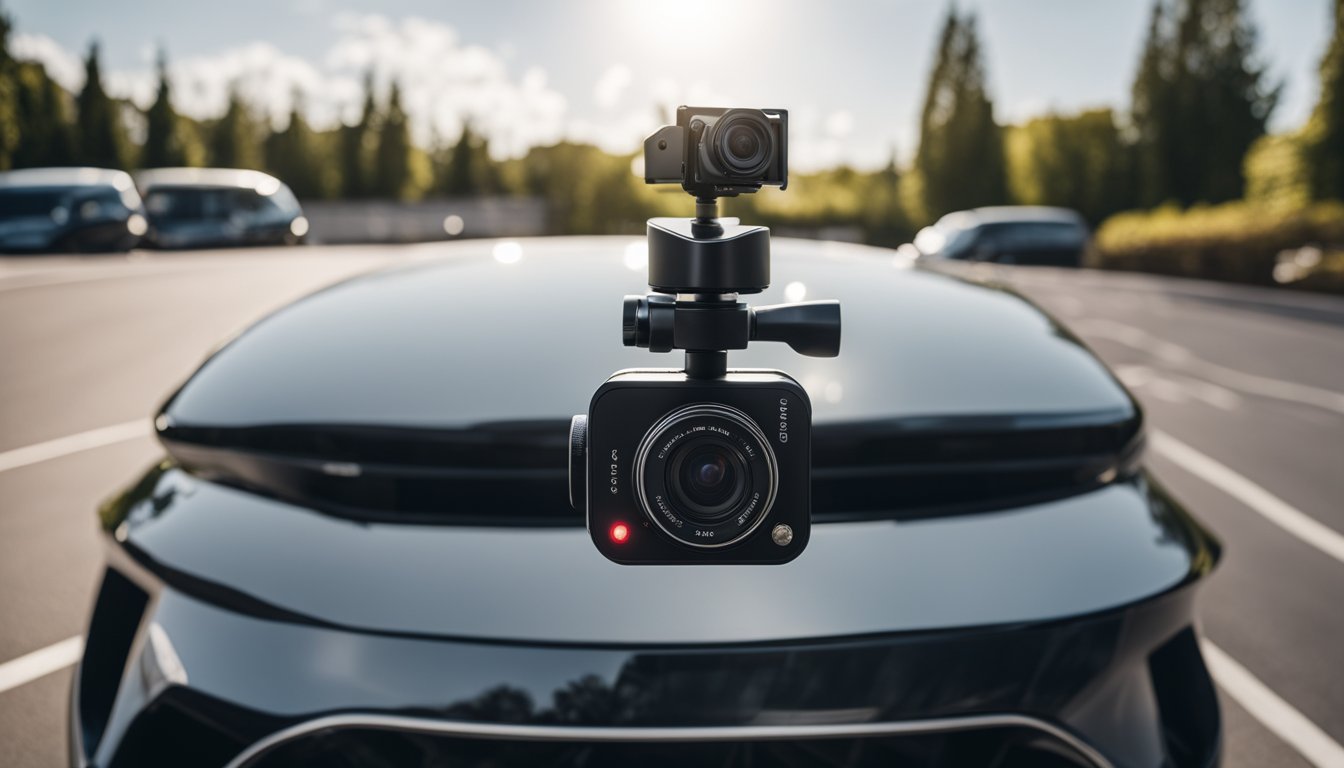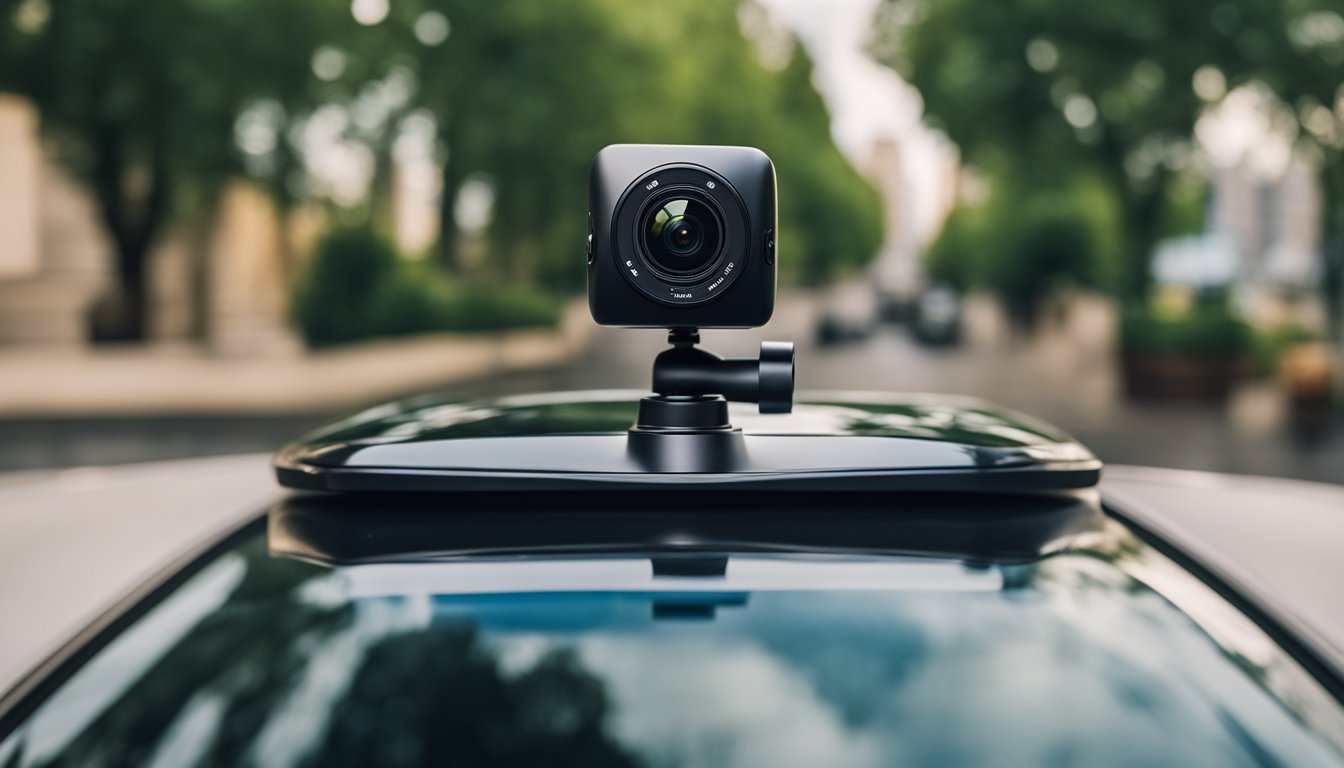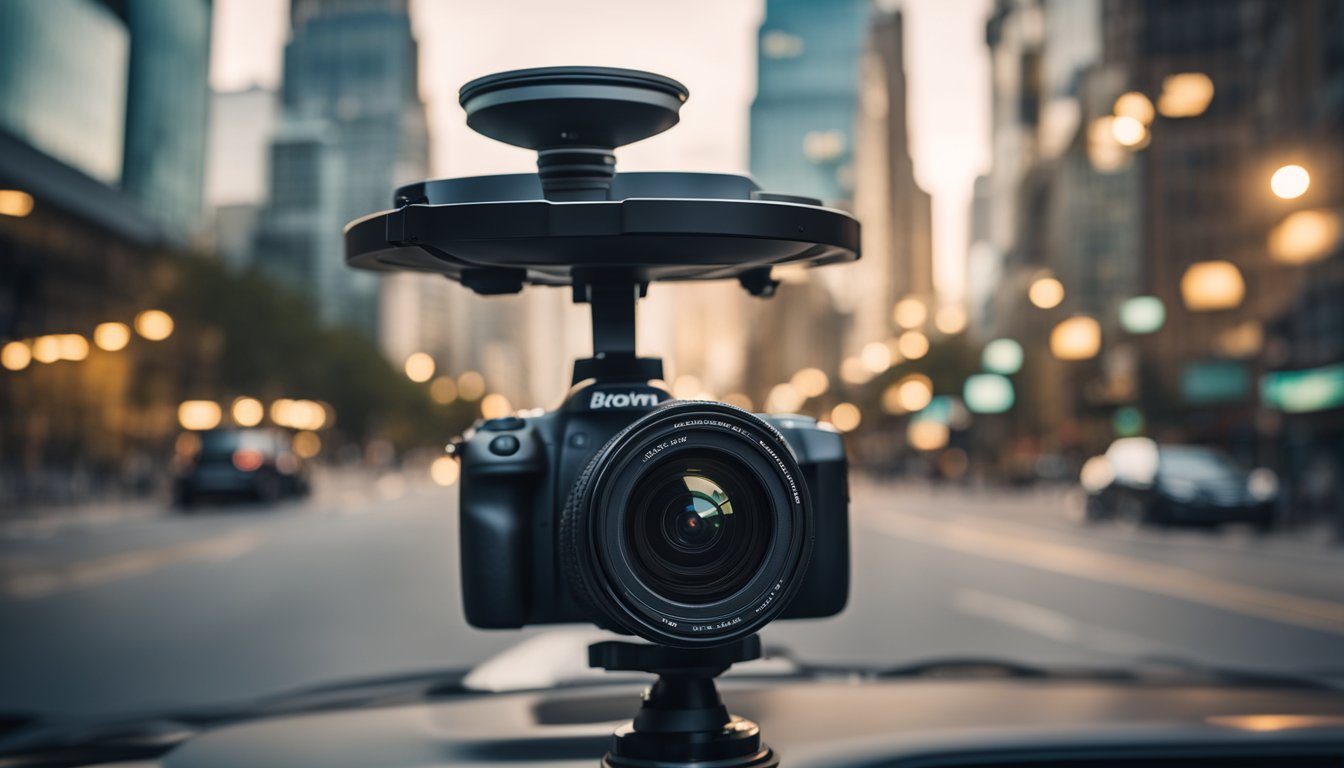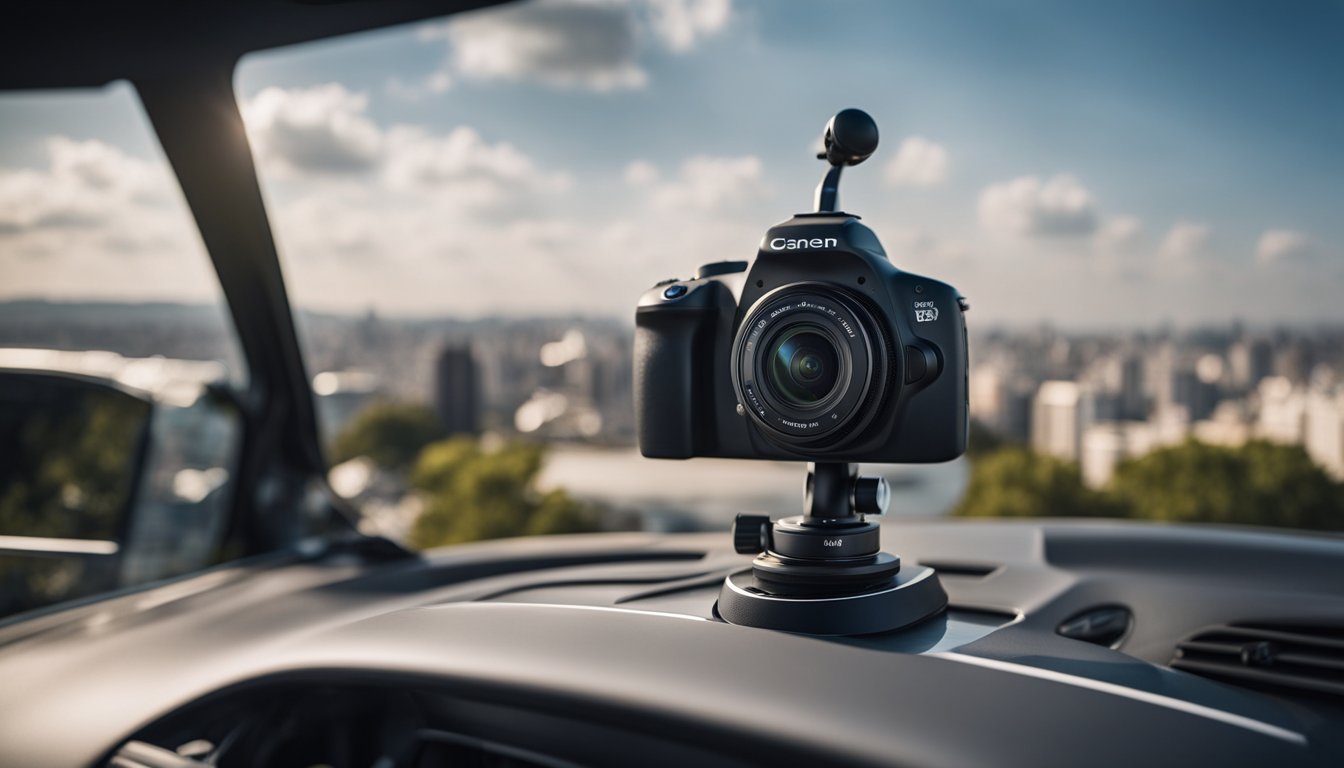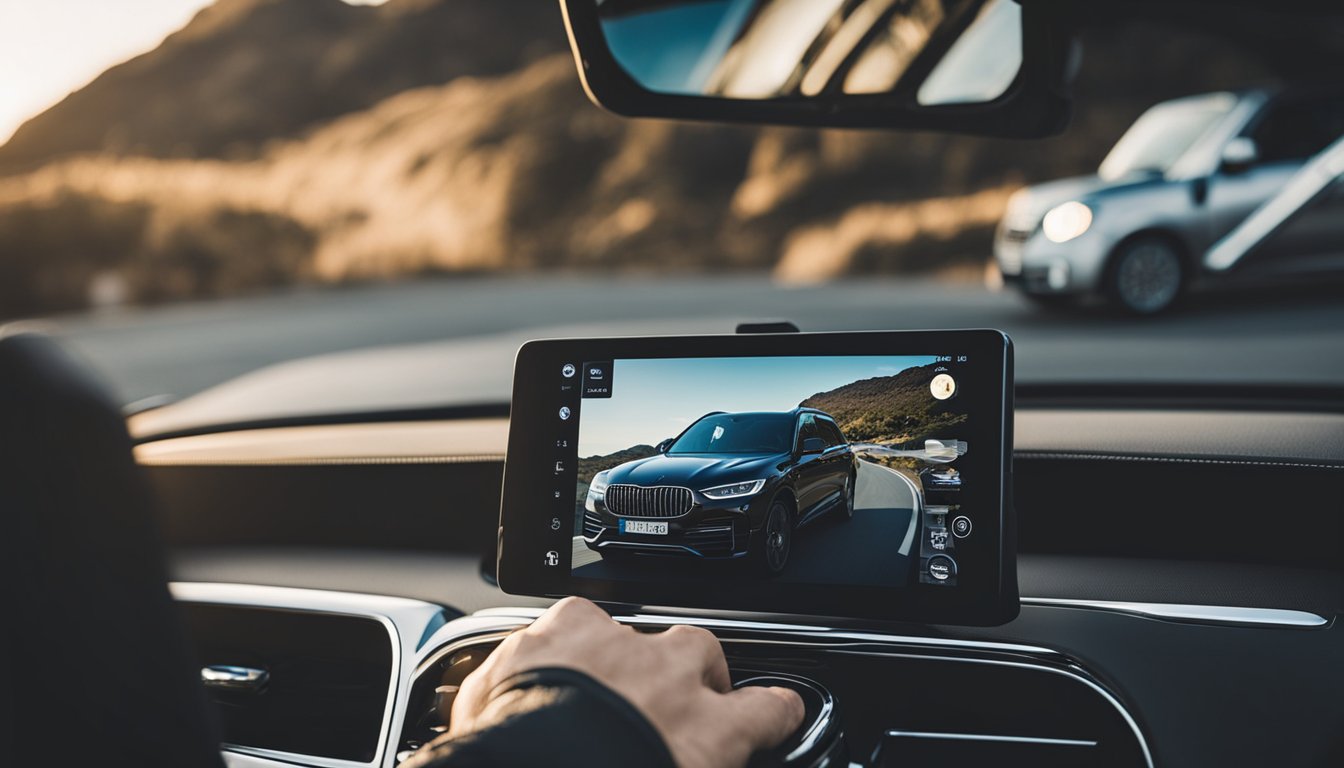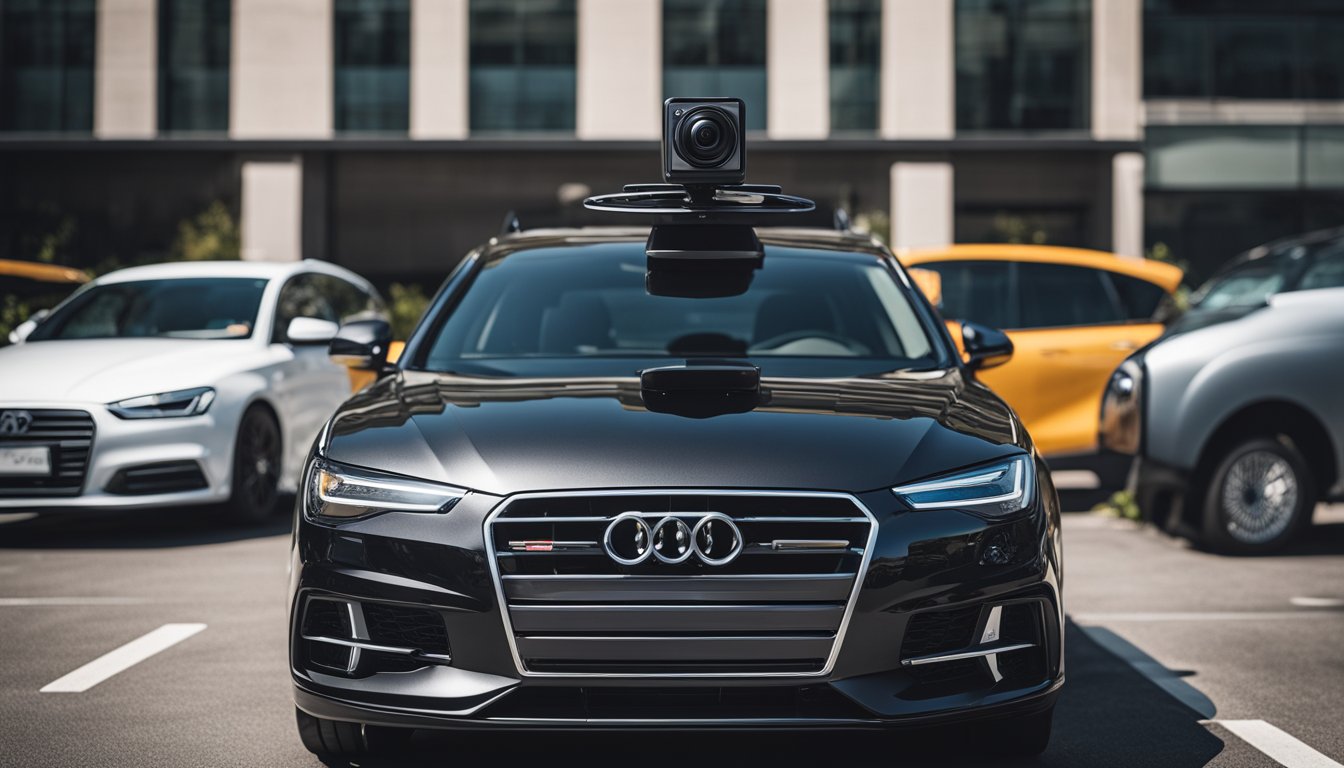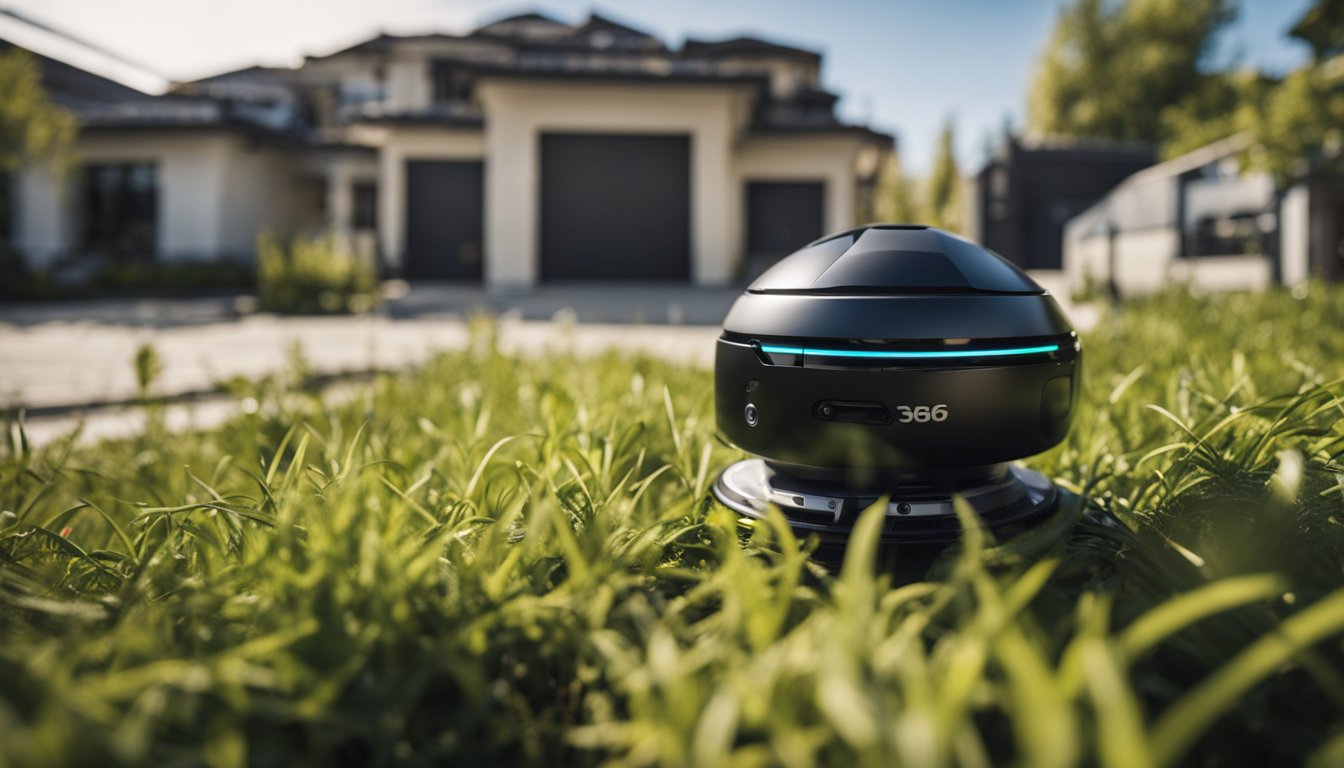If you’re looking for a comprehensive view of your surroundings while driving, a 360-degree camera system is an excellent solution. This technology provides you with a real-time view of the area surrounding your car, helping you navigate tight spaces, avoid obstacles, and park with ease. But where exactly are these cameras installed on a car?
The answer depends on the make and model of your vehicle, as well as the specific camera system you choose. In general, 360-degree camera systems consist of four or more cameras strategically placed around the car. These cameras capture footage from different angles and combine them to create a panoramic view of your surroundings.
In this article, we’ll explore the basics of 360-degree camera systems, including where the cameras are typically installed on a car. We’ll also cover some tips for maintaining your camera system and selecting the right vehicle for your needs. So whether you’re a new driver or a seasoned pro, read on to learn more about this innovative technology.
Key Takeaways
- 360-degree camera systems consist of four or more cameras placed strategically around the car.
- Camera placement depends on the make and model of your vehicle, as well as the specific camera system you choose.
- Proper maintenance and selecting the right vehicle are essential for getting the most out of your 360-degree camera system.
Understanding 360-Degree Camera Systems
https://www.youtube.com/watch?v=xqWkJJOcU4g&embed=true
If you’re looking to install a 360-degree camera in your car, it’s important to understand how this technology works and what components make up a 360 camera system.
Technology and Functionality
A 360-degree camera system utilizes multiple cameras around the vehicle to provide a comprehensive view of the surroundings. This technology combines the perspectives of several video cameras to create a bird’s-eye view image, which can be displayed on a monitor or screen inside the car.
The cameras capture footage in real-time, allowing you to see what’s happening around your car at all times. This can be especially useful when parking or driving in tight spaces, as it provides a better sense of your surroundings and helps you avoid collisions.

Components of a 360 Camera System
A 360 camera system typically consists of four cameras, one on each side of the vehicle. These cameras are usually installed in the front, rear, and side mirrors of the car. They work together to capture a 360-degree view of the car’s surroundings.
The cameras are connected to a central processing unit, which combines the footage from each camera to create a single, seamless image. This image is then displayed on a monitor or screen inside the car.
When choosing a 360-degree camera system, it’s important to consider the quality of the cameras and the image they produce. Look for cameras with high resolution and good low-light performance, as this will ensure that you get a clear and detailed view of your surroundings at all times.
In conclusion, a 360-degree camera system is an advanced technology that provides a comprehensive view of your car’s surroundings. Understanding the components of a 360 camera system can help you choose the right system for your needs and ensure that you get the best possible image quality.
Installation Basics
« How to View Mi 360 Camera on TV: A Quick Guide
Best 360 Camera Under $200: Affordable Options for High-Quality Shots »
If you’re interested in installing a 360 camera in your car, there are a few basics you should know before you get started. In this section, we’ll cover the key elements of the installation process, including choosing the right system, the tools and materials you’ll need, and an overview of the installation process itself.
Choosing the Right System
The first step in installing a 360 camera in your car is to choose the right system. There are a variety of aftermarket options available, so it’s important to do your research and choose a system that meets your needs. Look for a system that is compatible with your car, has a high-quality image sensor, and offers features like night vision and motion detection.
Tools and Materials Needed
Before you get started with the installation process, you’ll need to gather the necessary tools and materials. You’ll typically need a drill, screwdriver, wire cutters, and electrical tape. You may also need a mounting bracket or adhesive, depending on the type of camera you choose. Be sure to read the manufacturer’s instructions carefully to ensure you have everything you need before you begin.
Installation Process Overview
The installation process for a 360 camera in your car will vary depending on the system you choose and the specific requirements of your vehicle. However, there are some general steps you can expect to follow. These include:
- Choosing the location for the camera and mounting bracket
- Drilling holes for the mounting screws
- Running the camera’s wiring through the car’s interior
- Connecting the camera to the car’s electrical system
- Testing the camera to ensure it’s working properly
It’s important to note that installing a 360 camera in your car can be a complex process, and it may be best to seek professional installation if you’re not comfortable with the process. A professional installer can ensure that the camera is installed correctly and that it’s working properly.
Front Camera Placement
https://www.youtube.com/watch?v=2bcgNe0ik2M&embed=true
Installing a 360 camera in your car can be a great way to increase your situational awareness while driving. The front camera is an essential part of the system, as it provides a view of the road ahead. In this section, we’ll explore the different options for front camera placement and how to calibrate it for optimal view.
Integrating with the Front Grille
One option for front camera placement is to integrate it with the front grille of your car. This provides a clear view of the road ahead and can help you avoid collisions with other vehicles or obstacles. To integrate the camera with the grille, you’ll need to remove the grille and mount the camera securely in place. Make sure to use a mounting bracket that is designed for your specific make and model of car.
Calibration for Optimal View
Once you’ve installed the front camera, it’s important to calibrate it for optimal view. This involves adjusting the camera angle and settings to ensure that you have a clear view of the road ahead. To calibrate the camera, follow these steps:
-
Start by adjusting the camera angle. Make sure that the camera is pointed straight ahead and that it is not obstructed by any part of the car.
-
Next, adjust the camera settings to optimize the view. This may involve adjusting the brightness, contrast, and other settings to ensure that the image is clear and easy to see.
-
Finally, test the camera to make sure that it is working properly. Take your car for a test drive and make sure that the camera provides a clear view of the road ahead.
By integrating the front camera with the grille and calibrating it for optimal view, you can enjoy increased situational awareness while driving. With a clear view of the road ahead, you can avoid collisions and stay safe on the road.
Rear Camera Positioning
When it comes to installing a 360 camera in your car, the rear camera is just as important as the front. In this section, we’ll cover the best positions for your rear camera to ensure maximum visibility.
License Plate Integration
One popular option for rear camera positioning is to integrate the camera with your license plate. This involves installing a bracket that attaches to your license plate and holds the camera in place. This method is great because it doesn’t require any drilling or modification of your car’s body. Plus, it keeps the camera at a good height for capturing the area behind your car.
Ensuring a Clear Rearview
No matter where you install your rear camera, it’s important to make sure it has a clear view of the area behind your car. This means ensuring that the camera is not obstructed by any objects, such as a bike rack or spare tire. It’s also important to calibrate the camera properly to ensure that it is angled correctly and provides an accurate view.
Another important factor to consider is the camera’s resolution. A higher resolution camera will provide a clearer image, making it easier to see obstacles behind you. Keep in mind that a higher resolution camera may also be more expensive.
Overall, the rear camera is an important part of any 360 camera system. By following these tips, you can ensure that your rear camera is positioned correctly and provides a clear view of the area behind your car.
Side Cameras and Blind Spots
https://www.youtube.com/watch?v=vum-Q8n2WfE&embed=true
Side Mirrors vs. Cameras
Traditionally, side mirrors have been the primary tool for drivers to check their surroundings while on the road. However, they have their limitations, which is why many modern cars now come equipped with side cameras as well. While side mirrors only provide a limited view of what’s happening around you, cameras can offer a much wider view of your surroundings, including blind spots.
One of the main advantages of side cameras is that they can offer a much better view of what’s happening on the sides of your car. This can be especially useful when you’re trying to change lanes or merge into traffic. With cameras, you can see much more than you would with just your side mirrors, which can help you avoid accidents and stay safe on the road.
Minimizing Blind Spots
Blind spots are areas around your vehicle that you can’t see, even with your mirrors. These can be particularly dangerous, as they can hide other vehicles, pedestrians, or obstacles that you might not be aware of. Fortunately, cameras can help minimize blind spots and keep you safer on the road.
One of the main advantages of cameras is that they can be positioned to cover blind spots that are difficult to see with mirrors alone. For example, cameras can be placed on the sides of your car to give you a better view of what’s happening in your blind spots. They can also be positioned to cover areas that are difficult to see, such as behind your car or around corners.
In addition to cameras, there are other ways to minimize blind spots. For example, you can adjust your mirrors to provide a wider field of view. You can also make sure to check your blind spots before changing lanes or merging into traffic. By taking these steps, you can help ensure that you’re aware of your surroundings and can stay safe on the road.
Top View and Parking Assistance
https://www.youtube.com/watch?v=XcjDk7cHwoE&embed=true
When it comes to parking your car, it can be challenging to get it right the first time. Fortunately, many modern cars come equipped with a 360-degree camera system that can help you park your car with precision. This system provides a bird’s eye view of your car, making it easier to see where you’re going and avoid obstacles.
Bird’s Eye View for Precision Parking
The bird’s eye view camera is mounted on the top of the car, providing a 360-degree view of the surroundings. This feature is especially useful when parking in tight spaces or parallel parking. It allows you to see the entire area around your car, including any obstacles or other cars. With this view, you can easily maneuver your car into the perfect parking spot without worrying about hitting anything.
Integration with Parking Sensors
The bird’s eye view camera is often integrated with parking sensors to provide even more assistance. These sensors can detect objects around your car and alert you if you’re getting too close. Some cars even have an automatic parking feature that will park the car for you.
When you engage the automatic parking feature, the car will use its sensors and cameras to scan the area around it and find a suitable parking spot. Once it has found a spot, the car will take control of the steering and park itself. This feature is especially useful in tight spaces where it can be difficult to maneuver the car.
In conclusion, the 360-degree camera system with a bird’s eye view camera and parking sensors is a great addition to any car. It provides you with the assistance you need to park your car with precision and avoid any obstacles or other cars. With this system, you can park your car confidently and safely.
Maintaining Your 360 Camera System
To ensure that your 360 camera system stays in optimal condition, it is important to perform regular maintenance and cleaning. In this section, we will discuss some tips and tricks for maintaining your 360 camera system.
Cleaning and Care
Cleaning your 360 camera system is an important part of maintenance. Dirt, dust, and debris can build up on the lenses and sensors, which can affect the quality of the video feed. Here are some tips for cleaning and caring for your 360 camera system:
- Use a microfiber cloth to gently wipe the lenses and sensors. Avoid using harsh chemicals or abrasive materials that can scratch the surfaces.
- If the lenses are particularly dirty, you can use a lens cleaning solution and a lens cleaning pen to remove smudges and fingerprints.
- Check the camera housing for any signs of damage or wear and tear. If you notice any cracks or other damage, it may be time to replace the camera.
- Store the camera in a cool, dry place when not in use to prevent moisture buildup.
Troubleshooting Common Issues
Even with regular maintenance, you may encounter some issues with your 360 camera system. Here are some common issues and how to troubleshoot them:
- No video feed: If you are not getting a video feed from your 360 camera system, check the cables and connections. Make sure everything is securely connected and that the cables are not damaged. If the problem persists, it may be a software or hardware issue that requires professional assistance.
- Poor video quality: If the video quality is poor, check the lenses and sensors for dirt or debris. You may also need to adjust the camera settings to improve the image quality.
- Camera not working: If the camera is not turning on or is not responding, check the power source and battery. Make sure the camera is charged or connected to a power source. If the camera still does not work, it may be a hardware issue that requires professional assistance.
By following these tips for cleaning and troubleshooting, you can ensure that your 360 camera system stays in optimal condition and provides high-quality video feeds.
Selecting the Right Vehicle
When it comes to installing a 360 camera in your car, selecting the right vehicle is the first step. Compatibility with different automakers and adapting to large vehicles are two important factors to consider.
Compatibility with Different Automakers
Different automakers have different designs and specifications when it comes to their vehicles. Therefore, it is important to ensure that the 360 camera you plan to install is compatible with your vehicle’s make and model. For example, Toyota, Ford, and Mercedes-Benz may have different requirements for the installation of a 360 camera.
To ensure compatibility, it is best to consult with a professional installer or check the manufacturer’s website for compatibility information. This will help you avoid any potential issues or damage to your vehicle during the installation process.
Adapting to Large Vehicles
Large vehicles, such as trucks and SUVs, require different considerations when it comes to installing a 360 camera. These vehicles have larger blind spots and may require additional cameras or sensors to provide a complete view of the surroundings.
When selecting a 360 camera for a large vehicle, it is important to consider the size and shape of the vehicle, as well as the type of driving you will be doing. For example, if you frequently drive in tight spaces or off-road, you may need a more advanced system with additional cameras and sensors.
Overall, selecting the right vehicle is an important step in the process of installing a 360 camera. By ensuring compatibility with your automaker and adapting to the needs of your vehicle, you can enhance your driving experience and increase your safety on the road.
Aftermarket vs. Factory-Installed Systems
When it comes to 360-degree camera systems for your car, you have two options: aftermarket kits or factory-installed systems from automakers. Each has its own benefits and drawbacks, so it’s important to consider them before making a decision.
Benefits of Aftermarket Kits
One of the main benefits of aftermarket kits is that they are often less expensive than factory-installed systems. You can find kits for as low as a few hundred dollars, while factory-installed systems can add thousands of dollars to the cost of a new car.
Another advantage of aftermarket kits is that they can be installed on almost any car, regardless of make or model. This means that you can add a 360-degree camera system to your older car without having to buy a new one.
Comparing to Automaker Systems
On the other hand, factory-installed systems from automakers are often more reliable and better integrated into the car’s overall design. They are also covered by the car’s warranty, so if anything goes wrong, you can take it to the dealership to be fixed.
In addition, factory-installed systems are usually more advanced than aftermarket kits. For example, some automakers offer 3D views of the car’s surroundings, while aftermarket kits may only provide a 2D view.
Ultimately, the decision between an aftermarket kit and a factory-installed system comes down to your budget and your specific needs. If you’re looking for a more affordable option that can be installed on any car, an aftermarket kit may be the way to go. However, if you want a more advanced and integrated system that is covered by your car’s warranty, a factory-installed system may be the better choice.
Enhancing Safety and Security
https://www.youtube.com/watch?v=bWMFtGN1hsY&embed=true
Installing a 360 camera in your car can enhance your safety and security while driving. With a 360-degree view of your surroundings, you can identify potential dangers and move with more assurance. Here are some ways a 360 camera can enhance safety and security:
Real-Time View and Shock Sensors
A 360 camera provides a real-time view of your surroundings, making it easier to navigate through tight spaces and avoid obstacles. Some 360 cameras also come with shock sensors that can detect sudden movements and alert you to potential collisions. With this feature, you can react quickly and avoid accidents.
Security Applications
A 360 camera can also provide additional security when parking or maneuvering in reverse. With a 360-degree view of your car’s surroundings, you can easily spot any potential threats or suspicious activity. Some 360 cameras also come with motion detection sensors that can alert you to any movement around your car. This feature can help deter theft and vandalism.
In summary, installing a 360 camera in your car can enhance your safety and security while driving. With a real-time view of your surroundings and shock sensors, you can navigate through tight spaces and avoid collisions. Additionally, the security applications of a 360 camera can help deter theft and vandalism.
Frequently Asked Questions
How is the bird’s eye view achieved in cars with a 360-degree camera system?
The bird’s eye view in cars with a 360-degree camera system is achieved by using multiple cameras mounted on the vehicle. These cameras capture images of the car’s surroundings, which are then processed by a computer to create a composite view of the car’s environment from above. This view helps drivers to see obstacles and other vehicles that may be in their blind spots.
What are the benefits of having a 360-degree camera in a vehicle?
There are many benefits of having a 360-degree camera in a vehicle. It provides drivers with a complete view of their surroundings, which can help to prevent accidents. It also makes it easier to park in tight spaces and maneuver in crowded areas. Additionally, some insurance companies offer discounts to drivers who have a 360-degree camera installed in their vehicle.
Can a 360-degree camera system be installed in a car that didn’t originally come with one?
Yes, a 360-degree camera system can be installed in a car that didn’t originally come with one. There are many aftermarket kits available that can be used to add a 360-degree camera system to a vehicle. However, it is important to ensure that the kit is compatible with your car and that it is installed correctly to ensure optimal functionality.
What are the typical costs associated with installing an aftermarket 360-degree camera in a car?
The cost of installing an aftermarket 360-degree camera in a car can vary depending on the make and model of the vehicle, as well as the type of kit that is used. Generally, the cost can range from a few hundred dollars to several thousand dollars. It is important to do your research and compare prices before making a purchase.
What are some of the best 360-degree camera systems for cars currently on the market?
There are many 360-degree camera systems for cars currently on the market, each with its own set of features and benefits. Some of the best systems include the Garmin BC 35, the Rydeen Surround View Camera System, and the Esky 360 Degree Car Camera System. It is important to consider factors such as image quality, ease of use, and compatibility with your vehicle when choosing a system.
How do you properly mount a 360 camera on a car for optimal functionality?
To properly mount a 360 camera on a car for optimal functionality, it is important to follow the manufacturer’s instructions carefully. Generally, the camera should be mounted in a location that provides a clear view of the car’s surroundings, such as on the roof or near the license plate. It is important to ensure that the camera is securely mounted and that all wiring is properly connected to ensure optimal functionality.

